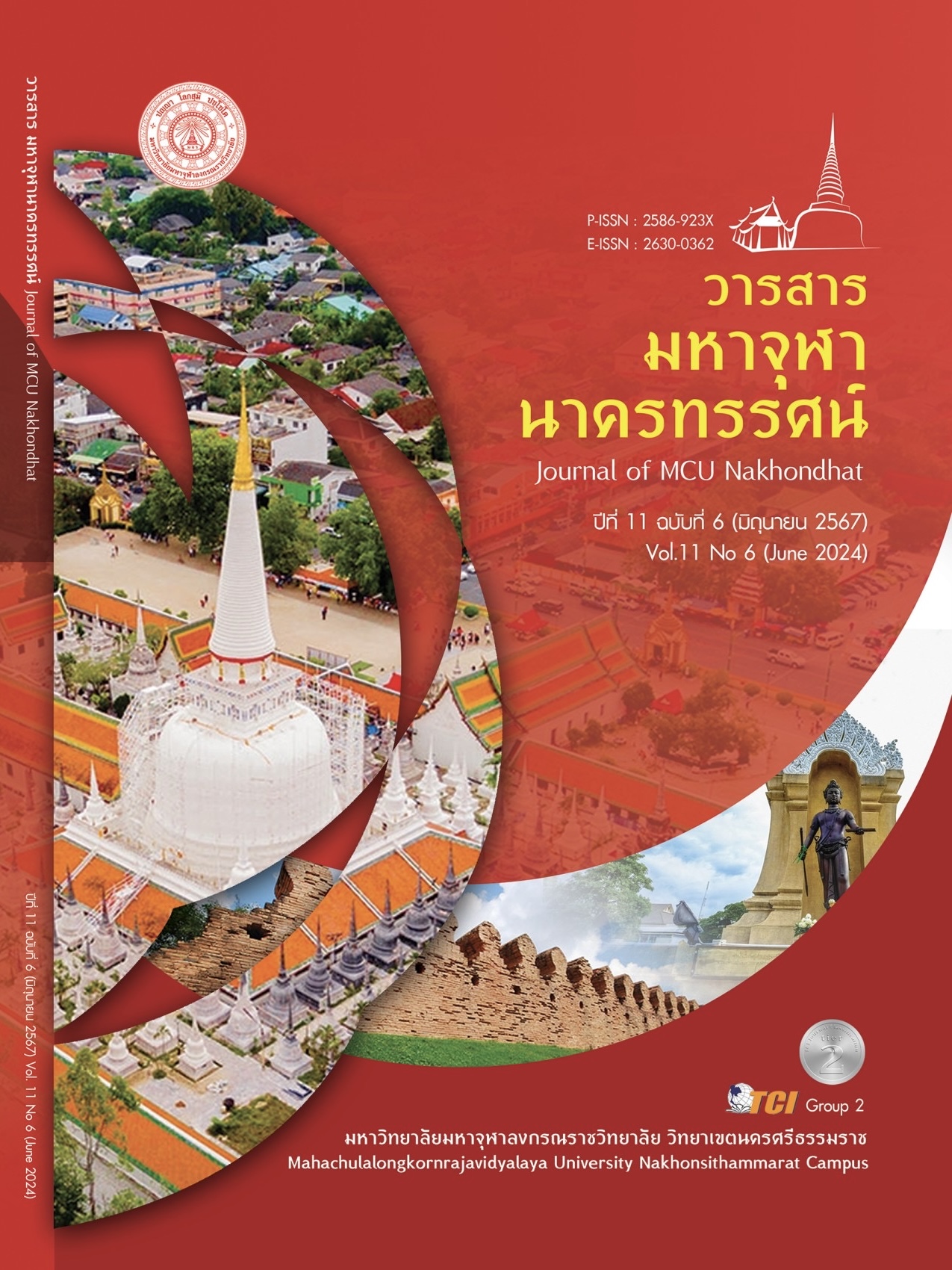INFORMATION TECHNOLOGY ACCEPTANCE OF PERSONNEL IN THE OFFICE OF THE MINISTRY OF HIGHER EDUCATION, SCIENCE, RESEARCH AND INNOVATION
Main Article Content
Abstract
The objectives of research were to 1) Study information technology acceptance of personnel in the Office of the Ministry of Higher Education, Science, Research and Innovation 2) Compare information technology acceptance of personnel in the Office of the Ministry of Higher Education, Science, Research and Innovation classified by personal factors 3) Study the relationship between external organizational factors and information technology acceptance of personnel in the Office of the Ministry of Higher Education, Science, Research and Innovation as well as 4) Internal factors and information technology acceptance of personnel in the Office of the Ministry of Higher Education, Science, Research and Innovation. The representative sample included 232 persons from a total population of 552 people Consisting of government officer, temporary staff, and government employees, The sample size was calculated using Taro Yamane. Quantitative research method was used The questionnaire was used as a tool to collect research data. The data were analyzed by using statistical package software included frequency, percentage, mean, standard deviation, T-test, One-way analysis of variance and the Pearson correlation coefficient. According to research findings, the representative sample of personnel in the Office of the Ministry of Higher Education, Science, Research and Innovation accepted information technology are at a high level, Most of them have a high level of Evaluation stage average was 1.95 and awareness stage has the lowest average value of 1.34. The results of the hypothesis was found that personal factors of personnel in the Office of the Ministry of Higher Education, Science, Research and Innovation, i.e. gender, age, educational level, work status, position, work experience differently had no significant difference in information technology acceptance. Additionally, external organizational factors of personnel in the Office of the Ministry of Higher Education, Science, Research and Innovation and internal factors of personnel in the Office of the Ministry of Higher Education, Science, Research and Innovation were positive related at a low level to information technology acceptance in a statistically significant manner at .05 level.
Article Details

This work is licensed under a Creative Commons Attribution-NonCommercial-NoDerivatives 4.0 International License.
References
ดวงพร รัดสินทร. (2562). การรับรู้เทคโนโลยีที่มีผลต่อความตั้งใจใช้บริการการชำระเงินผ่านคิวอาร์โค้ดของผู้บริโภคในเขตกรุงเทพมหานคร. ใน วิทยานิพนธ์บริหารธุรกิจมหาบัณฑิต สาขาวิชาการตลาด. มหาวิทยาลัยศรีนครินทรวิโรฒ.
วรวรรธน์ วิมลอุดมสิทธิ์. (2563). ปัจจัยด้านจิตวิทยาที่มีผลต่อการตัดสินใจเลือกใช้บริการสถานบันเทิงย่านเอกมัยของผู้ใช้บริการสถานบันเทิงในเขตกรุงเทพมหานคร. ใน วิทยานิพนธ์ปริญญานิเทศศาสตรมหาบัณฑิต สาขาวิชาการสื่อสารเชิงกลยุทธ์. มหาวิทยาลัยกรุงเทพ.
สํานักงานคณะกรรมการพัฒนาระบบราชการ. (2565). พระราชบัญญัติการปฏิบัติราชการทางอิเล็กทรอนิกส์ พ.ศ. 2565. เรียกใช้เมื่อ 16 สิงหาคม 2566 จาก https://www.opdc.go.th/content/NzgzMA
สำนักงานปลัดกระทรวงการอุดมศึกษาวิทยาศาสตร์วิจัยและนวัตกรรม. (2565). คำสั่งสำนักงานปลัดกระทรวงการอุดมศึกษา วิทยาศาสตร์ วิจัยและนวัตกรรม ที่ 429/2565 เรื่อง แต่งตั้งคณะทำงานขับเคลื่อนการใช้ e-Document ระดับกระทรวง. เรียกใช้เมื่อ 25 ตุลาคม 2565 จาก https://www.ops.go.th/th/aboutus/legal-ops/83-m-rules/7684-e-document
สำนักงานปลัดกระทรวงการอุดมศึกษาวิทยาศาสตร์วิจัยและนวัตกรรม. (2565). ระบบสารสนเทศกลุ่มบริหารทรัพยากรบุคคล. เรียกใช้เมื่อ 1 กันยายน 2565 จาก https://www.ops.go.th/th/personnel
Fred D. Davis. (1989). Perceived Usefulness, Perceived Ease of Use, and User Acceptance of Information Technology, Management Information Systems Research Center. Retrieved August 16, 2023, from https://www.depts.ttu.edu/rawlsbusiness/people/faculty/isqs/freddavis/index.php
Nunnally, J. C. (1978). Psychometric Theory. New York: McGraw-Hill.
Rogers, E. & Shoemaker, F. (1978). Communication of innovations: A cross-cultural approach. New York: Free Press.
Rogers, E. M. & Floyd Shoemaker, F. (1971). Communication of diffusions: A cross cultural approach, (2nd ed.). New York: The Free Press.
Rogers, E. M. (2003). Diffusion of Innovations. New York: Free Press.
Yamane, T. (1973). Statistic: An introductory analysis (3rd Ed). New York: Harper and Row Publications.


